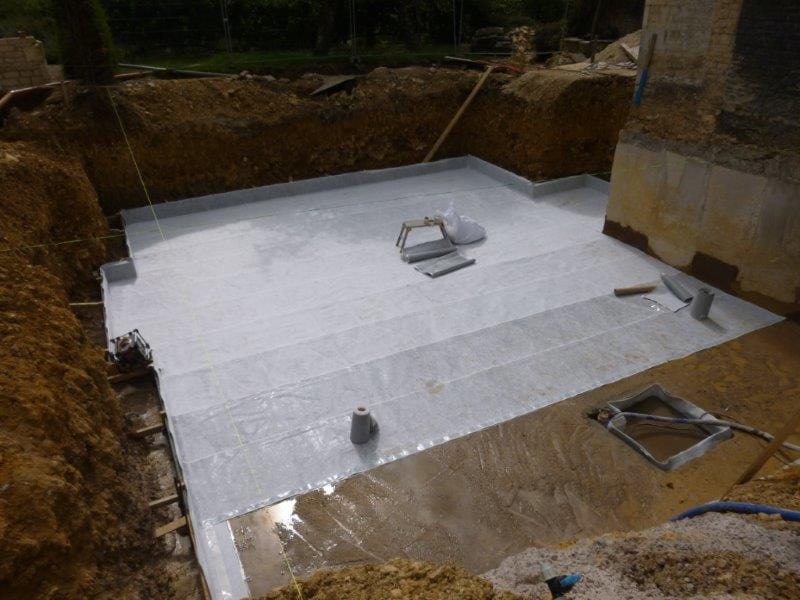Water proofing is a crucial aspect of preserving the soundness and security of any residence or facility. With moisture damage being one of the most frequent issues landowners face, having effective waterproofing methods can mean the difference between a secure space and high repairs. From basements prone to flooding to roofs that need to bear severe weather conditions, understanding the various waterproofing techniques available is crucial for all property owners.
In this article, we will explore ten unique waterproofing strategies tailored for every need. Whether you are seeking to protect your foundation, improve energy efficiency, or prevent fungus and mildew in your bathroom, there are clever options that can help you defend your building. We will also tackle common misconceptions about waterproofing, provide insights on do-it-yourself versus expert solutions, and underscore the importance of being forward-thinking in maintaining a dry and secure environment. Let's delve into these options and discover how you can effectively protect your building from the damaging effects of moisture.
The Significance of Waterproofing
Waterproofing is a critical aspect of preserving the quality and longevity of any house or edifice. Lacking proper waterproofing solutions, properties turn vulnerable to moisture damage, which can lead to expensive repairs and serious structural problems. Water intrusion can weaken foundations, lead to mold growth, and damage electrical systems, which present challenges that can be both financially and emotionally taxing for homeowners and property managers in general.
Committing to waterproofing is essential not only for defense against short-term water damage but also for long-term maintenance. Through addressing potential vulnerabilities promptly, property owners can spare thousands of dollars in future repairs. Proper waterproofing creates a shield that helps support comfortable living conditions while also safeguarding valuable assets. It's a forward-thinking approach that boosts the overall value of the property.
Additionally, waterproofing contributes to energy efficiency and sustainability. Properly sealed buildings with effective waterproofing measures keep heating and cooling losses low, resulting in lower utility bills. In an era where energy conservation is critical, incorporating waterproofing solutions into construction and renovation moves beyond simple protection—it's part of creating an eco-friendly and financially viable environment.
Affordable Waterproofing
As you thinking about waterproofing, it’s important to look into budget-friendly options that provide reliable protection without spending too much. One of the most budget-friendly solution is applying a waterproof sealant to surfaces such as cellars, walls, and footings. Sealants are provided in various formulations and can effectively block moisture when applied correctly. This DIY approach not only saves money on professional services but also allows homeowners to take control of their waterproofing needs.
Additionally economical solution is the use of drainage systems. Installing roof drainage systems and downspouts channels water away from your property, significantly reducing the risk of water damage. Also, installing French drains or landscape drains around your foundation can help manage groundwater and prevent leaks. These systems require an initial investment, but they offer great value in the long run by preventing the costly repairs associated with water damage.

In conclusion, incorporating landscaping strategies can also serve as a cost-effective waterproofing solution. By grading your yard away from your home and carefully arranging plants and mulch, you can create a natural barrier against moisture intrusion. This approach not only defends your property but also enhances the overall aesthetics of your landscape. Investing in these preventive measures can result in significant savings in potential repairs while ensuring a dry and safe living environment.
Selecting the Best Waterproofing Method
Determining the suitable waterproofing approach for your property is determined by various factors, such as the particular area needing protection, the kind of structure, and the underlying causes of water intrusion. For instance, basements may necessitate distinct solutions such as interior drainage systems or surface sealants, while exterior waterproofing might focus on utilizing membranes or coatings. Grasping the environment and the challenges caused by moisture can significantly determine which method will be the best effective.
An additional important consideration is whether to opt for DIY options or hire expert services. DIY waterproofing can be economical and satisfying but might not always provide the level of protection necessary, especially for complex issues like foundation leaks. On the other hand, hiring a professional can offer reassurance, as experienced contractors can recommend appropriate solutions and apply them accurately. The choice also depends on your budget and the capability for long-term savings.
Ultimately, evaluating the longevity and maintenance demands of each waterproofing method is crucial. Some methods may require less frequent upkeep, while others might necessitate regular inspections and touch-ups to continue to be effective. Always take the time to take the time to explore different products, techniques, and contractors to ensure you choose a waterproofing solution that not only meets your immediate needs but also safeguards your investment for years to come.
